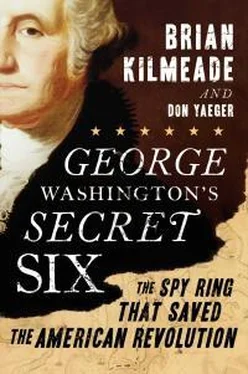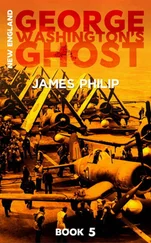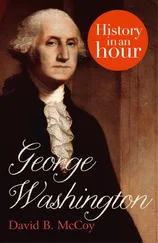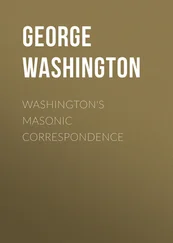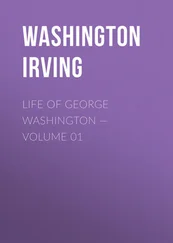New York, tenuously held by a few American troops, was desired by both sides. In the north, the Americans had secured Boston for the moment. To the south, the action had not yet reached a critical point, though its time was coming. Right now, the most pressing concern was in the middle states, where Philadelphia and New York lay vulnerable. Philadelphia was the largest city in the colonies at the time and held great symbolic status as a seat of innovation, boasting one of the first hospitals and public libraries, as well as hosting the meetings of the Continental Congress. Capturing the seat of the fledgling nation’s government would be a great victory for the British. And New York City was the linchpin—if the British won it they could bring the colonies to their knees.
As the second-most-populous city in the colonies, New York was their northern economic hub. But even more significant was New York’s location and situation—right in the center of Britain’s North American settlements and home to both a large deep-water harbor and access to the Hudson River. The army that held New York City and its waterways had a strategic advantage not only in controlling the import and export of foodstuffs and dry goods (which, in turn, affected the economic stability of the region) but also in securing a key foothold for transporting troops up and down the coast.
Maintaining control of New York would give the American fighting corps and the colonial populace a tremendous boost in confidence. Failing to capture and hold New York City and New York Harbor would certainly be an embarrassment to the British army and navy, but they would survive the blow. For the Americans, however, losing the region would be a tragedy, destroying morale, cutting off trade, and drastically lowering the odds that the Patriots would win the war.
New York’s strategic significance, from a trade perspective, was not lost on General Howe. The loss in Massachusetts was a disappointment, but Boston was not the ultimate prize for the British. Howe wanted to choke off the Revolution by isolating the northern colonies from the southern ones. If the political radicals in the somewhat geographically clustered northern cities were segregated from their counterparts in the more spread-out south, they could not cross-pollinate ideologies, and the various factions might be more easily eliminated. It was a classic case of divide and conquer, with New York City as the essential element in creating the chasm.
After regrouping in Halifax, Nova Scotia, following their defeat in Boston, the British set out for New York. On June 29, 1776, three British ships sailed into lower New York Harbor, with General Howe aboard one of them. Both sides knew a battle was imminent.
As Washington marched south in anticipation of Howe’s attack, he must have nursed the hope that the Continental Army’s muscle and moxie were enough to outfight the British and hold Manhattan. Being a seasoned fighter and a brilliant strategist, he would have understood, perhaps better than anyone else in North America at the time, that control of New York City was essential for the cause of liberty—and that keeping the city would be a daunting task.
Washington and his men arrived in New York in mid-April 1776 and settled in Manhattan. That summer news arrived that both cheered and sobered them. Fifty-six delegates had convened in the midst of stifling July heat in Philadelphia to form the Second Continental Congress, and had forged the Declaration of Independence. If ever there was a point of no return, this was it.
Knowing the attack on New York would not be long delayed, Washington made a short trip to New Jersey and Pennsylvania to meet with his generals. They discussed New York’s defenses and supplies—all while trying to anticipate the exact mode of attack. The British, meanwhile, began amassing troops on undefended Staten Island in advance of storming the American positions just across the water in Brooklyn and Manhattan.
As August dragged on, tensions mounted. A copy of the July fourth declaration had been put before the Crown, which meant that King George finally understood the seriousness of the colonists’ determination to fight. No longer would King George order his generals to show restraint in their efforts to squelch the rebels or maintain that a mere show of force would be enough to subdue the Revolution. He would not hold back. He would not show mercy. Of this Washington felt sure, and the weight of the “lives, fortunes, and sacred honor” pledged in the name of freedom rested heavily upon his shoulders.
Across the river from Washington, General Henry Clinton had arrived to help lead the attack upon the American positions in New York. As August waned, the British ships loomed large in the harbor, the growing number of redcoats on Staten Island intimidating the sparse American troops.
Faced with an impending attack, Washington sighed one August day as he surveyed the undisciplined, ragtag army at his command in lower Manhattan; his aide-de-camp shifted nervously behind him. The general cleared his throat. “General Howe is rumored to have more than thirty thousand men in the Royal Navy assembled offshore, and twenty thousand men amassed on Staten Island. And we have . . . ?”
His aide was reluctant to reply: “Ten thousand.”
If the number was a blow to Washington, he did not show it. Ever the stoic, he refused to allow this dismal news to throw him into despair. Washington was famed as a man who never lost his nerve in battle. The sound of musket fire, the crash of cannonballs, the smell of smoke—none of that seemed to shake his calm, measured way of surveying the chaos and keeping his wits about him as he led his men forward.
But despite Washington’s steely nerve, the Americans were in grave trouble. Even substantial numbers of troops meant little without proper training and equipment, and Washington’s men lacked both. Washington had the utmost confidence in his officers, but to say that the rank and file of the Continental Army was rough around the edges was an understatement. City men who had never before wielded a rifle stood with country folk who had never had a day of formal schooling. Hardy homesteaders struggled to cooperate with young men of landed wealth who had never known a moment of discomfort or hunger in their lives. Old men lined up with boys who had lied about their age to join the rebels in pursuit of adventure. They came from all over the country: from as far north as the mountains of New Hampshire and as far south as the swamps of Georgia. Many of Washington’s men had never before been more than fifty miles from the place of their birth, let alone met anyone with such a strange accent as could be found in the hills of Virginia or the Puritan settlements of Massachusetts. They were all on the side of liberty, but there the unity ended.
Most were brave, to be sure, and loyal—perhaps to a fault. And they were all passionate about their liberty. Washington knew he had the hearts of his men, but whether the passion of an undisciplined few could hold New York against the meticulously trained British forces was another question.
“Hang together or we all hang separately,” Washington mused, reciting one of the familiar mantras of the Patriot cause, as he caught a few strains of a bawdy pub song led by the Marylanders sitting around a campfire. All possible preparations against the British onslaught had been made, and he and his men would have to trust it would be enough.
Knowing that an attack was imminent, Washington had made the strategic decision to divide his men into five groups. One had already crossed the harbor to Long Island, and another was stationed in northern Manhattan to fend off a British encroachment from that direction. The other three groups were situated to defend the lower end of Manhattan. There were several land routes the British might take, but Washington felt confident that all but the least likely and somewhat untraveled route, through Jamaica Pass, were secure. And now . . . they waited.
Читать дальше
